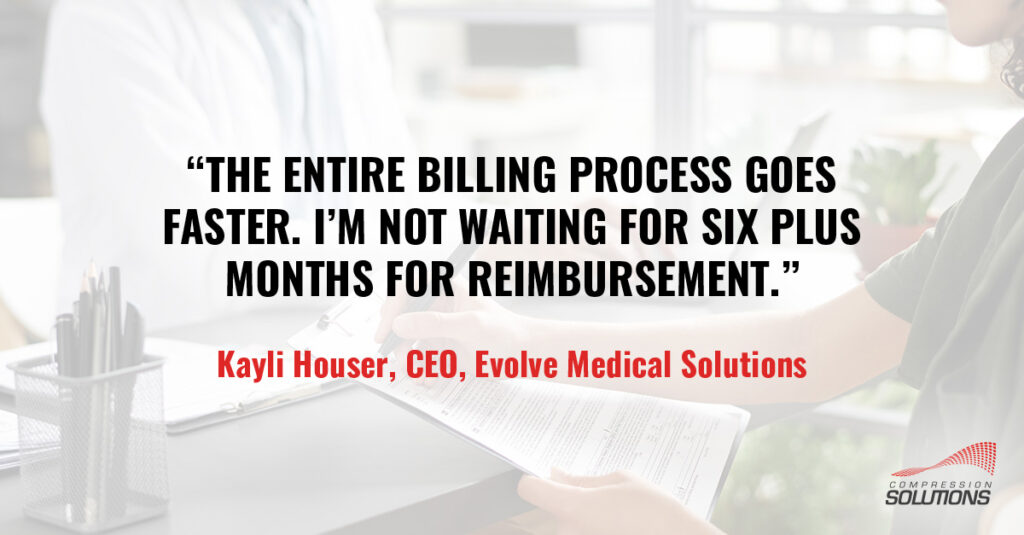
Medical device reps and facilities alike are tossing paper bill sheets and switching to electronic medical billing.
DME supplier Evolve Medical Solutions recently began submitting claims digitally through Compression Solutions, and they are already reaping numerous benefits, including:
- Saving time for administrators
- Reducing errors
- Improving patient experience
- Seamless integration with HIPAA and other legal guidelines
Below, read our latest case study to learn how Evolve Medical Solutions is spending their extra hours on growing their business—instead of paperwork!
Addressing Security Concerns
When selecting a medical billing provider, Kayli Houser, CEO of Evolve Medical Solutions, says the biggest concern was protecting patient information.
Houser began pitching her clients to submit billing documentation digitally in the Spring of 2023. “Because this process involves having access to the facility’s ScanChart, I walked through how Compression Solutions is compliant in protecting patient information,” she says.
The individuals who access the facility’s ScanChart are part of the Compression Solutions billing team. This team is fully trained in HIPAA compliance and secure billing practices.
“We have very robust compliance and security processes in place when it comes to patient data,” says Brian Stowell, an onboarding specialist with Compression Solutions. “But we are also bound by HIPAA guidelines. Bottom line: our company is publicly traded and requires strict security measures to be in place.”
Saving Time with Electronic Claims Submission
Immediately after onboarding, companies can see increased efficiency, time savings, and oftentimes a shorter cycle between service and billing.
“The biggest thing we are trying to accomplish is creating clinical efficiencies,” says Stowell. “If we aren’t utilizing digital services, the clinical staff has to print or scan paperwork. If we have access to the system, we can capture necessary information for medical billing purposes.”
“The biggest thing we are trying to accomplish is creating clinical efficiencies.” – Brian Stowell, Onboarding Specialist, Compression Solutions
With electronic claims submission, medical device reps can focus more on account management and less on paperwork—all while keeping patient data secure.
“My reps spend fewer hours picking up records, scanning them in, retrieving missing information requests,” says Houser. “This process allows us to allocate those hours towards more revenue-generating activities and developing new business.”
Houser notes that medical billing services also offer immediate value to clients like ambulatory surgery centers (ASCs): “This process can decrease the time their administrative staff is pulling and printing records allowing them to focus on other tasks.”
The Electronic Medical Billing Process

Here is the typical process for submitting electronic medical billing paperwork:
- The physician orders medical devices used for surgery or recovery.
- The patient signs a prescription.
- The facility submits documentation.
- Billing specialists begin to pull patient demographic information, op-notes, medical history, and physicals.
- The billing specialist determines what billing it goes to via the insurance.
- Compression Solutions sends it to the biller for billing and reimbursement.
Overall, this process takes around 30 days, which is a fraction of the typical turnaround.
“The entire billing process goes faster. I’m not waiting for six plus months for reimbursement.” – Kayli Houser, CEO of Evolve Medical Solutions
Additional Benefits of Electronic Medical Billing for Healthcare Facilities
Of course, medical billing solutions don’t just benefit sales reps and DME suppliers; the improvements are passed on to healthcare providers and their patients.
Kimberly Allen MLS, BSN, RN, is annother Compression Solutions customer who recalls medical billing before switching to electronic claims. She would routinely order DVT prevention sleeves, but the medical billing paperwork could really add up.
“The devices were ordered in, and at first, the process of getting them to the patient was simple as we do the education,” says Allen. “But the initial paperwork that we were doing was quite cumbersome … The process was quite time-consuming, especially on days when we had several patients.”
Allen was responsible for collecting completed bill sheets from patients along with printing documents such as H&P, operative notes, and other related documentation. This all had to be filled out, packaged together and then picked up from the facility.
Once she decided to switch to submitting medical billing information electronically, the process became much easier.
“The billing form is straightforward and easy to use, and the new billing process has been a game changer for us.” – Kimberly Allen MLS, BSN, RN
Optimize Your Medical Billing Process with Compression Solutions
Overall, submitting paperwork digitally is much more efficient and secure than utilizing paper. It’s exceptionally helpful when the billing team and facility must go back and forth sharing patient information.
For more information on medical billing services, contact a Key Account Manager today.
